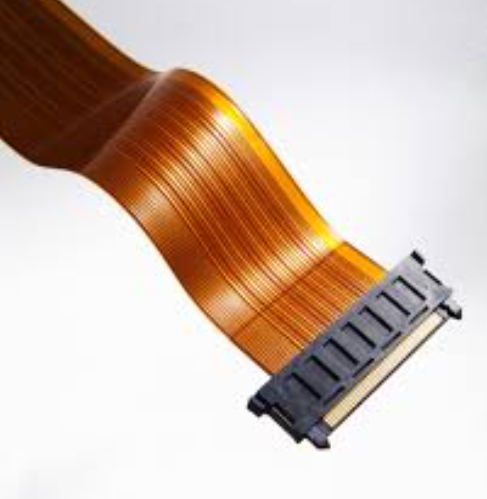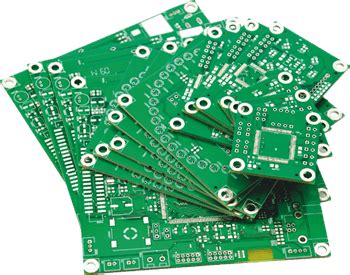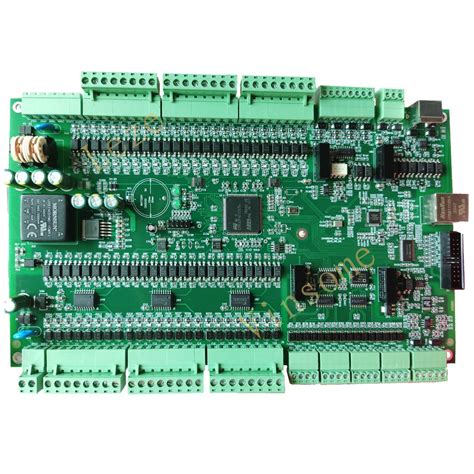Dynamic flex pcb
Advantages Of Using Dynamic Flex PCBs In Modern Electronics
Dynamic flex PCB, or flexible printed circuit boards, have become increasingly integral to the advancement of modern electronics. These innovative components offer a multitude of advantages that make them indispensable in various applications, ranging from consumer electronics to industrial machinery. One of the primary benefits of dynamic flex PCBs is their inherent flexibility, which allows for more compact and versatile designs. Unlike traditional rigid PCBs, dynamic flex PCBs can be bent, folded, and twisted without compromising their functionality. This flexibility enables designers to create more intricate and space-efficient electronic devices, which is particularly valuable in the development of wearable technology, medical devices, and compact consumer electronics.
In addition to their physical flexibility, dynamic flex PCBs also offer enhanced durability and reliability.
The materials used in these PCBs are typically more resilient to environmental stressors such as vibration, shock, and temperature fluctuations. This makes them ideal for use in harsh environments where traditional rigid PCBs might fail. For instance, in the automotive and aerospace industries, where electronic components are subjected to extreme conditions, dynamic flex PCBs provide a robust solution that ensures consistent performance and longevity.
Moreover, the use of dynamic flex PCBs can lead to significant cost savings in both manufacturing and maintenance.
The ability to integrate multiple components into a single flexible circuit reduces the need for additional connectors and interconnects, which not only simplifies the assembly process but also minimizes potential points of failure. This streamlined design can result in lower production costs and reduced assembly time. Furthermore, the enhanced reliability of dynamic flex PCBs translates to fewer repairs and replacements, thereby lowering maintenance costs over the lifespan of the device.
Another notable advantage of dynamic flex PCBs is their contribution to improved signal integrity and electrical performance.
The flexible nature of these PCBs allows for shorter and more direct routing of electrical paths, which can reduce signal loss and electromagnetic interference. This is particularly important in high-frequency applications where maintaining signal integrity is crucial. As a result, devices that utilize dynamic flex PCBs can achieve better performance and higher efficiency, which is a significant advantage in competitive markets.
Additionally, dynamic flex PCBs offer greater design freedom and innovation potential.
Engineers and designers are not constrained by the rigid form factor of traditional PCBs, allowing them to explore new configurations and applications. This opens up possibilities for creating more ergonomic and user-friendly devices, as well as enabling the development of novel technologies that were previously unattainable. For example, the flexibility of these PCBs has been instrumental in the advancement of foldable smartphones and other cutting-edge consumer electronics.
Furthermore, the environmental benefits of dynamic flex PCBs should not be overlooked.
The reduction in material usage and waste, coupled with the potential for longer device lifespans, contributes to a more sustainable approach to electronics manufacturing. As the industry continues to prioritize eco-friendly practices, the adoption of dynamic flex PCBs aligns with these goals by promoting resource efficiency and reducing the environmental impact of electronic devices.
In conclusion, the advantages of using dynamic flex PCBs in modern electronics are manifold. Their flexibility, durability, cost-effectiveness, improved electrical performance, design freedom, and environmental benefits make them a superior choice for a wide range of applications. As technology continues to evolve, the role of dynamic flex PCBs is likely to expand, driving further innovation and enhancing the capabilities of electronic devices across various industries.

Design Considerations For Dynamic Flex PCBs
When designing dynamic flex PCBs, several critical considerations must be taken into account to ensure optimal performance and reliability. Dynamic flex PCBs, known for their ability to bend and flex during operation, are increasingly utilized in applications where space constraints and mechanical movement are prevalent. These applications range from wearable technology to aerospace systems, where the ability to withstand repeated flexing without failure is paramount.
One of the foremost considerations in the design of dynamic flex PCBs is material selection.
The choice of substrate material significantly impacts the board’s flexibility and durability. Polyimide is a commonly used material due to its excellent thermal stability, mechanical strength, and flexibility. However, the specific requirements of the application may necessitate the use of other materials, such as polyester or liquid crystal polymer, each offering unique properties that can enhance performance under dynamic conditions.
In addition to material selection, the thickness of the flex PCB plays a crucial role in its dynamic performance.
Thinner substrates generally provide greater flexibility, which is advantageous in applications requiring frequent bending. However, a balance must be struck between flexibility and mechanical strength to prevent damage during operation. Designers must carefully consider the minimum bend radius, which is the smallest radius the flex PCB can bend without causing mechanical stress or damage. This parameter is influenced by the material properties, thickness, and the number of layers in the PCB.
The layout and routing of traces on a dynamic flex PCB also demand meticulous attention.
Trace width and spacing should be optimized to minimize stress concentrations that can lead to failure. It is advisable to use curved traces instead of sharp angles, as sharp angles can act as stress risers and increase the likelihood of cracking. Additionally, the use of staggered vias rather than stacked vias can distribute mechanical stress more evenly, enhancing the board’s durability.
Another critical aspect is the selection of appropriate adhesives and coverlays.
These materials protect the conductive traces and provide additional mechanical support. The adhesive must be flexible enough to accommodate the bending of the PCB while maintaining strong adhesion to prevent delamination. Coverlays, typically made from polyimide or other flexible materials, shield the traces from environmental factors such as moisture and contaminants, further extending the lifespan of the PCB.
Thermal management is another vital consideration in the design of dynamic flex PCBs.
The repeated flexing and bending can generate heat, which, if not properly managed, can degrade the performance and reliability of the PCB. Effective thermal management strategies, such as the incorporation of thermal vias and the use of heat-dissipating materials, are essential to maintain optimal operating temperatures.
Moreover, the mechanical attachment of the flex PCB to other components or assemblies must be carefully designed to avoid introducing additional stress points.
The use of strain relief features, such as bend radii and support structures, can mitigate the mechanical stress experienced during operation. Proper mechanical attachment ensures that the flex PCB can move freely without being subjected to undue stress, thereby enhancing its longevity.
In conclusion, the design of dynamic flex PCBs requires a comprehensive understanding of material properties, mechanical dynamics, and thermal management. By carefully considering these factors, designers can create robust and reliable flex PCBs that meet the demanding requirements of dynamic applications. The integration of these considerations into the design process ensures that the final product not only performs optimally but also withstands the rigors of repeated flexing, thereby delivering long-term reliability and performance.
Applications Of Dynamic Flex PCBs In Wearable Technology
Dynamic flex PCBs, or flexible printed circuit boards, have revolutionized the landscape of wearable technology, offering unparalleled versatility and functionality. These advanced circuit boards are designed to bend and flex, making them ideal for integration into devices that require a high degree of mobility and adaptability. The applications of dynamic flex PCBs in wearable technology are vast and varied, encompassing a range of devices from fitness trackers to medical monitoring systems.
One of the primary applications of dynamic flex PCBs in wearable technology is in fitness trackers.
These devices, which monitor various health metrics such as heart rate, steps taken, and calories burned, require a flexible and durable circuit board to function effectively. The dynamic flex PCB allows for the seamless integration of sensors and other electronic components into the compact and often curved form factors of fitness trackers. This flexibility not only enhances the durability of the device but also ensures that it can withstand the rigors of daily use, including exposure to sweat and movement.
In addition to fitness trackers, dynamic flex PCBs are also integral to the development of smartwatches.
These sophisticated devices combine the functionality of a traditional watch with the capabilities of a smartphone, allowing users to receive notifications, track their fitness, and even make calls. The compact and flexible nature of dynamic flex PCBs enables the incorporation of a wide range of features into a small and lightweight form factor. This is particularly important in smartwatches, where space is at a premium, and the device must be comfortable to wear for extended periods.
Moreover, dynamic flex PCBs play a crucial role in the realm of medical wearables.
These devices, which include continuous glucose monitors, ECG monitors, and other health monitoring systems, require a high degree of reliability and precision. The flexibility of dynamic flex PCBs allows for the creation of devices that can conform to the contours of the human body, providing accurate and consistent readings. Furthermore, the durability of these circuit boards ensures that the devices can withstand the demands of long-term use, making them an invaluable tool in the management of chronic health conditions.
Another significant application of dynamic flex PCBs in wearable technology is in the development of smart clothing.
This innovative field involves the integration of electronic components into textiles, creating garments that can monitor various health metrics, provide haptic feedback, or even change color based on environmental conditions. The flexibility and thinness of dynamic flex PCBs make them ideal for embedding into fabrics without compromising comfort or wearability. This opens up a myriad of possibilities for the future of wearable technology, from athletic wear that tracks performance to clothing that can monitor vital signs in real-time.
Furthermore, the use of dynamic flex PCBs extends to the realm of augmented reality (AR) and virtual reality (VR) headsets. These devices require a high degree of flexibility and precision to provide an immersive experience. The dynamic flex PCB allows for the integration of various sensors and displays into a lightweight and comfortable headset, enhancing the user experience and enabling more advanced features.
In conclusion, the applications of dynamic flex PCBs in wearable technology are both diverse and transformative. From fitness trackers and smartwatches to medical wearables and smart clothing, these flexible circuit boards provide the foundation for a new generation of devices that are more versatile, durable, and capable than ever before. As wearable technology continues to evolve, the role of dynamic flex PCBs will undoubtedly become even more critical, driving innovation and expanding the possibilities of what these devices can achieve.

Manufacturing Challenges And Solutions For Dynamic Flex PCBs
Dynamic flex PCBs, or flexible printed circuit boards, have become increasingly integral in modern electronics due to their ability to bend, twist, and conform to various shapes. This adaptability makes them ideal for applications in wearable technology, medical devices, and compact consumer electronics. However, the manufacturing of dynamic flex PCBs presents a unique set of challenges that must be addressed to ensure reliability and performance. Understanding these challenges and the corresponding solutions is crucial for manufacturers aiming to produce high-quality dynamic flex PCBs.
One of the primary challenges in manufacturing dynamic flex PCBs is material selection.
The materials used must exhibit excellent flexibility and durability to withstand repeated bending and flexing. Polyimide is commonly chosen for its superior thermal stability and mechanical properties. However, the choice of adhesive and copper foil also plays a significant role. Adhesives must maintain strong bonds without becoming brittle over time, while copper foils need to be thin enough to allow flexibility but robust enough to handle electrical loads. To address these material challenges, manufacturers often conduct extensive testing and simulations to identify the optimal combination of materials that balance flexibility, durability, and electrical performance.
Another significant challenge is the precision required in the fabrication process.
Dynamic flex PCBs often feature intricate designs with fine lines and spaces, necessitating high-precision manufacturing techniques. Laser direct imaging (LDI) and advanced photolithography are commonly employed to achieve the necessary accuracy. These techniques allow for the creation of fine features and complex geometries that are essential for the functionality of dynamic flex PCBs. Additionally, maintaining tight tolerances during the etching and plating processes is critical to ensure the integrity of the circuit paths. Manufacturers must implement rigorous quality control measures, including automated optical inspection (AOI) and electrical testing, to detect and rectify any defects early in the production process.
Thermal management is another area of concern in the manufacturing of dynamic flex PCBs.
The flexible nature of these PCBs can lead to challenges in dissipating heat, which can affect performance and longevity. To mitigate this issue, manufacturers often incorporate thermal vias and heat spreaders into the design. These features help to distribute heat more evenly across the PCB, preventing hotspots that could lead to failure. Additionally, selecting materials with high thermal conductivity can further enhance heat dissipation. Advanced thermal simulation tools are also employed to predict and address potential thermal issues during the design phase, ensuring that the final product can operate reliably under various conditions.
The assembly process for dynamic flex PCBs also presents unique challenges.
The flexible nature of these PCBs can make handling and placement of components more difficult compared to rigid PCBs. Specialized equipment and techniques, such as flexible circuit carriers and automated pick-and-place machines, are often used to ensure precise component placement. Furthermore, the soldering process must be carefully controlled to prevent damage to the flexible substrate. Techniques such as reflow soldering with controlled temperature profiles and the use of low-temperature solder alloys can help to minimize thermal stress on the PCB.
In conclusion, the manufacturing of dynamic flex PCBs involves addressing a range of challenges related to material selection, precision fabrication, thermal management, and assembly. By leveraging advanced materials, precision manufacturing techniques, and rigorous quality control measures, manufacturers can overcome these challenges and produce reliable, high-performance dynamic flex PCBs. As technology continues to evolve, ongoing research and development will be essential to further enhance the capabilities and applications of these versatile electronic components.





